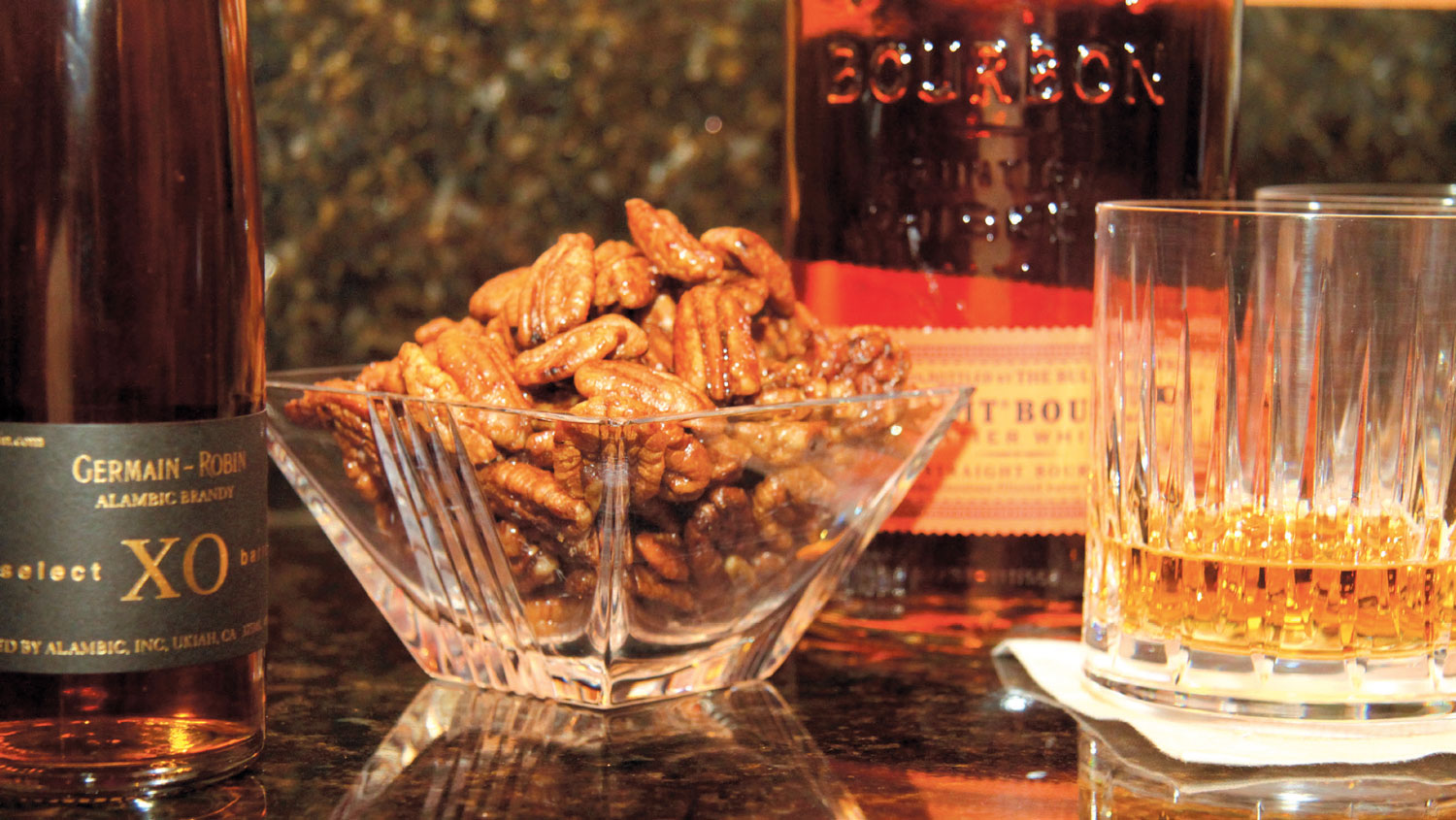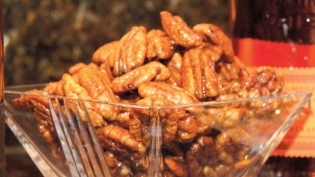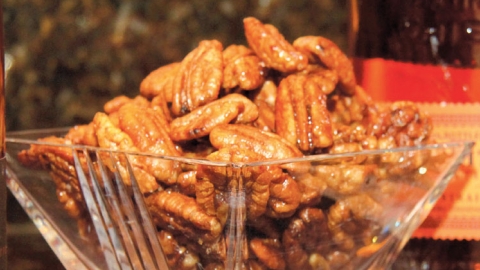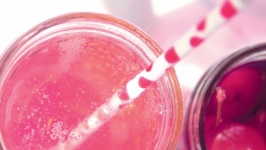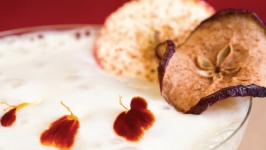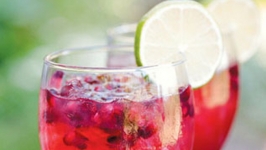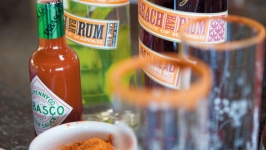A Date with the Browns: Whiskies, Bourbons, Ryes & Brandies
My first taste of brown liquor came in the form of a Boston Sour, a whiskey sour with a dash of egg white to froth the top. My parents mixed them every year on Halloween, and served them to chilly parents in our New England neighborhood from an antique pewter pitcher on the front hall table. Naturally, we were a popular Halloween stop for children of all ages.
I cannot honestly remember whether my sample was sanctioned or surreptitiously slurped, but the aromas and flavors of that sip are indelibly imprinted. While my parents were primarily martini people, when fall and winter came around the odd bourbon or scotch would appear from our little closet bar off the kitchen, and an occasional brandy at the end of the evening.
Whiskey and other brown liquors always fascinated me. I have no idea why I was so drawn to them early on, but years later when I saw a small whiskey still in action, and watched barrels being steam-bent and charred, I was hooked. This primeval alchemy, translated by various cultures over hundreds of years, has given birth to a broad stylistic palette of beautiful brown liquors.
Brandies are made from fruit and whiskies from grain, but either way, the juxtaposition of power and finesse can be captivating. Beyond the mad-scientist appeal of distilling, there is the magic of toasted or charred wood. Coopers employ ancient tools, steam and fire to craft barrels that transform liquor from firewater to pheromone. Through the years, I have been drawn again and again to these “browns,” from a collegiate obsession with single-malt scotch, to bourbon, rye and brandies of every sort as an adult.
The new millennium has brought a renaissance to the world of liquors, as well as wines, in America. Bar-goers and liquor geeks, ever thirsty for new labels, have breathed new life into old family operations and new distilling ventures in equal measure. There is a thriving cocktail and liquor scene in most cities, large and small, with tentacles stretching right into the heart of wine country. Case in point: former Cyrus’ rock star bartender Scott Beattie, author of Artisanal Cocktails (Ten Speed Press, 2008), now at home at St. Helena’s Goose & Gander, pouring artisan liquors, mixing classic cocktails, and creating masterpieces like the house signature “scarlet gander.” Beattie makes his own array of infusions, flavorings and garnishes, producing gorgeous cocktails that still celebrate the quality of the liquors that are their foundations.
There are few “classic food pairings” for liquor and cocktails, unless you count bar snacks, and I most certainly do. Bar snacks are typically salty and often a little sweet. Of the five tastes (sweet, sour, salty, bitter and umami), sweetness most effectively tempers our taste impression of bitterness and the astringent mouthfeel that bitterness brings. Salt, likewise, tempers bitterness, and heightens our taste impressions in general, helping to bring out subtle nuance in liquor that alcohol might otherwise obscure.
When it comes to my cherished browns, the flavors and – wine speak – texture is literally the texture of a wine or liquor (I used mouth-feel elsewhere, but if not too repetitive, and clearer, use it instead if you like)texture of charred or toasted wood becomes a factor to consider in any food designed to go alongside it. We can certainly take a cue from foods we love with well-oaked wines, but the raw character of most liquors is an 800-pound gorilla that, by comparison, make Napa Valley’s high-alcohol Cabernet Sauvignons and Zinfandels look like beverages for the kiddie table. Salt, sweetness, acidity and fat all help to tame high alcohol, but they certainly don’t erase it, and if you love your browns, why would you want them to?
One of the ubiquitous no-brainers of any well-laid bar is the toasted nut. The reasons are fairly simple to understand. Firstly, people like nuts. Secondly, any bar owner knows that, although nuts are fairly expensive, salty/sweet nuts make people thirsty inclined to order (the addition does not work for me either way – I really think it is stronger when you let the reader draw the simple inference that thirst = money in a bar), which pays for the nuts and then some.
There’s more to it, really. And here we come to the meat of the nut, so to speak. Roasted nuts are the most perfect of the perfect snacks for a date with the browns. Be it bourbon, rye, scotch, Irish whisky, fine brandy, or any of the cocktails they have sired, nuts just love the browns. Is it because most nuts come from trees, and trees make barrels? Too simple? No, it’s precisely simple enough. But it isn’t only the trees that connect amber liquors and roasted nuts; it is caramelization.
Charred or toasted wood is essentially a caramelized vegetable, and it morphs whatever is aged in it, infusing rich color, complex aroma, and deep flavor, every bit as much as a hot pan does when it browns a steak or an onion. Roasted nuts gain complementary aromas and flavors from a hot pan or a warm oven, building a simple, intuitive bridge to liquor (and wine) that has been aged in toasted oak and other woods. Layer in a little salt, sugar and spice, and we bring the two even closer. Finally, we find a relatively high fat content nut meat, which, by coating the palate, softens the wood’s grip and tempers alcohol’s bite. Give me a scotch neat, a Manhattan or a late-night Armagnac, and there’s a roasted nut for that.
Pecans are a particular favorite of mine. They strike a lovely balance between sweet meat and earthy skin, and have a satisfying not-quite-crunchy texture. The flavor combination of pecans and caramelized sugar is legendary. Pralines and pecan pie are the pecan paradigms that come immediately to mind. At the bar, the sweetness of either of these classics would overwhelm even the sweetest cocktail, let alone a whiskey neat or snifter of brandy, but pan-toasted pecans give us an opportunity to enhance the simple complement of caramelized oak to caramelized nuts with sweet, sour, salty and spice character, which intermingle beautifully with the brownest of the browns.
If you are looking for local, artisan-made whiskey to enjoy with your spiced pecans, you have a challenge on your hands. There are only a handful of whiskey distillers in California. Anchor Brewing Company has been producing 100% rye (single-malt) whiskeys at their Potrero Hill brewery in San Francisco since the 1990s and 13th generation distiller Marko Karakasevic of Napa’s Domaine Charbay has released excellent whiskeys made from bottle-ready beer, but it is near impossible to find either of these for sale, even locally.
While not technically “California-made,” master distiller Lance Winters of Alameda’s St. George Distillery has recently released his blend of various Kentucky-distilled bourbons under the label Breaking & Entering Bourbon that should be more readily avail- able in local spirits shops.
You’ll have better luck with world-class California brandy, as Ukiah distiller Germain-Robin has been making what many consider to be the world’s finest alembic brandies for decades. They use only Mendocino County grapes, forgoing the traditional Ugni Blanc varietal (aka Trebbiano) of Cognac for Pinot Noir and other fine wine grapes.
‘Tis the season!


